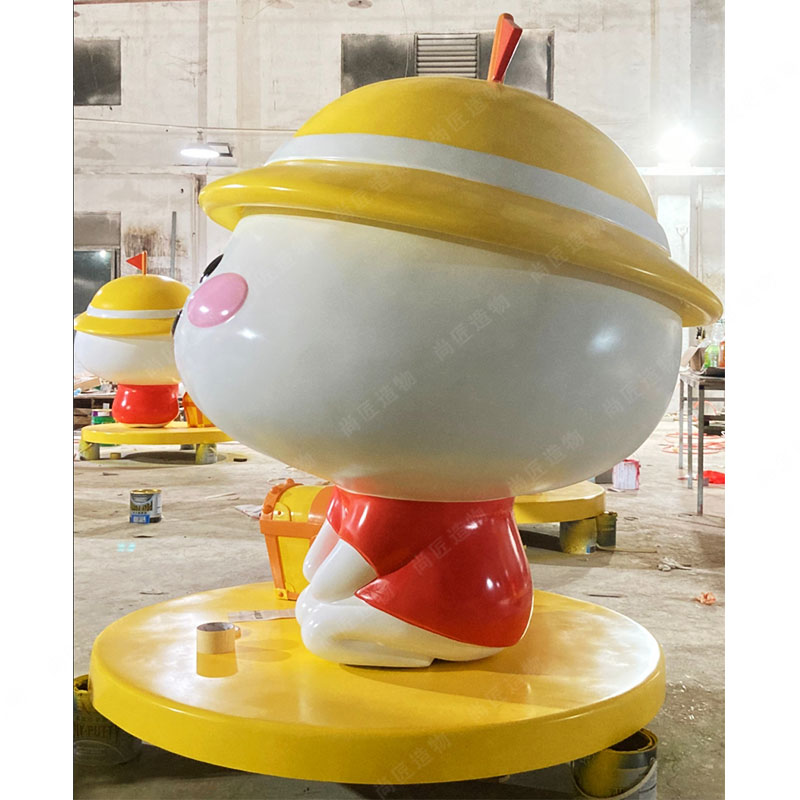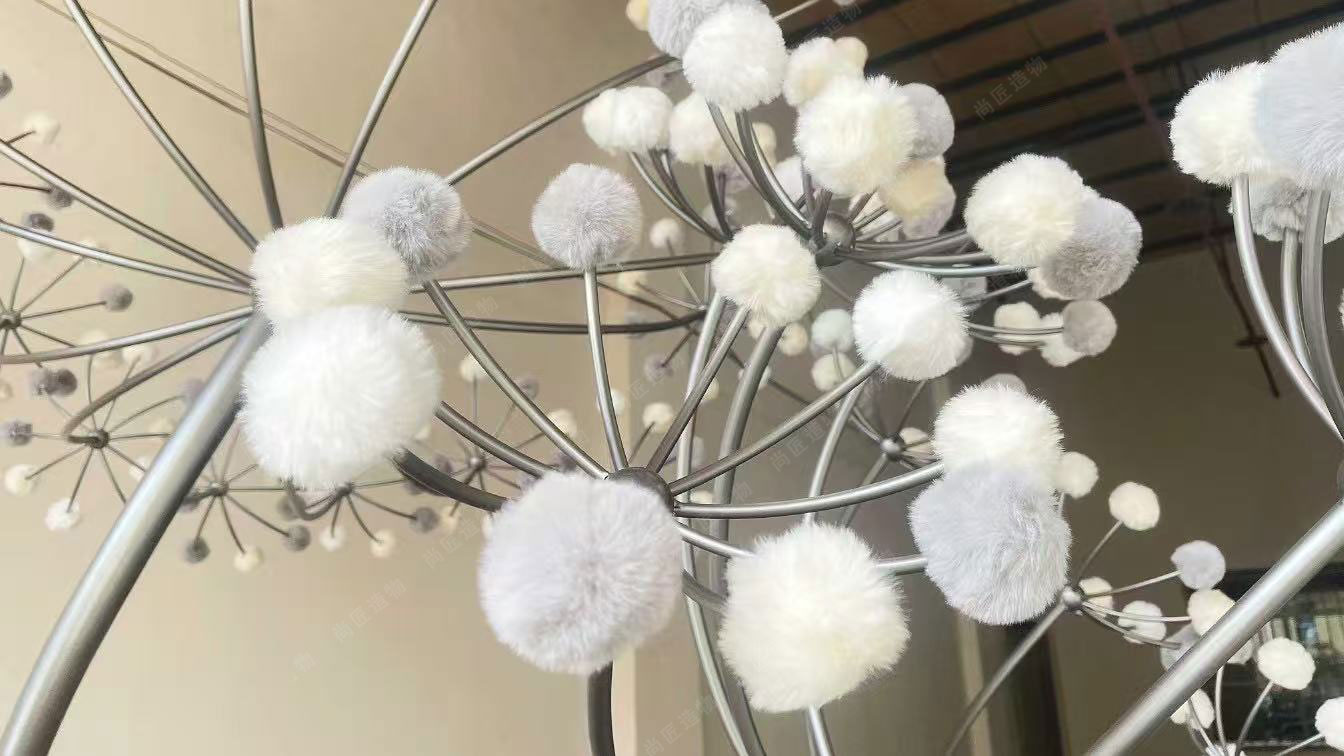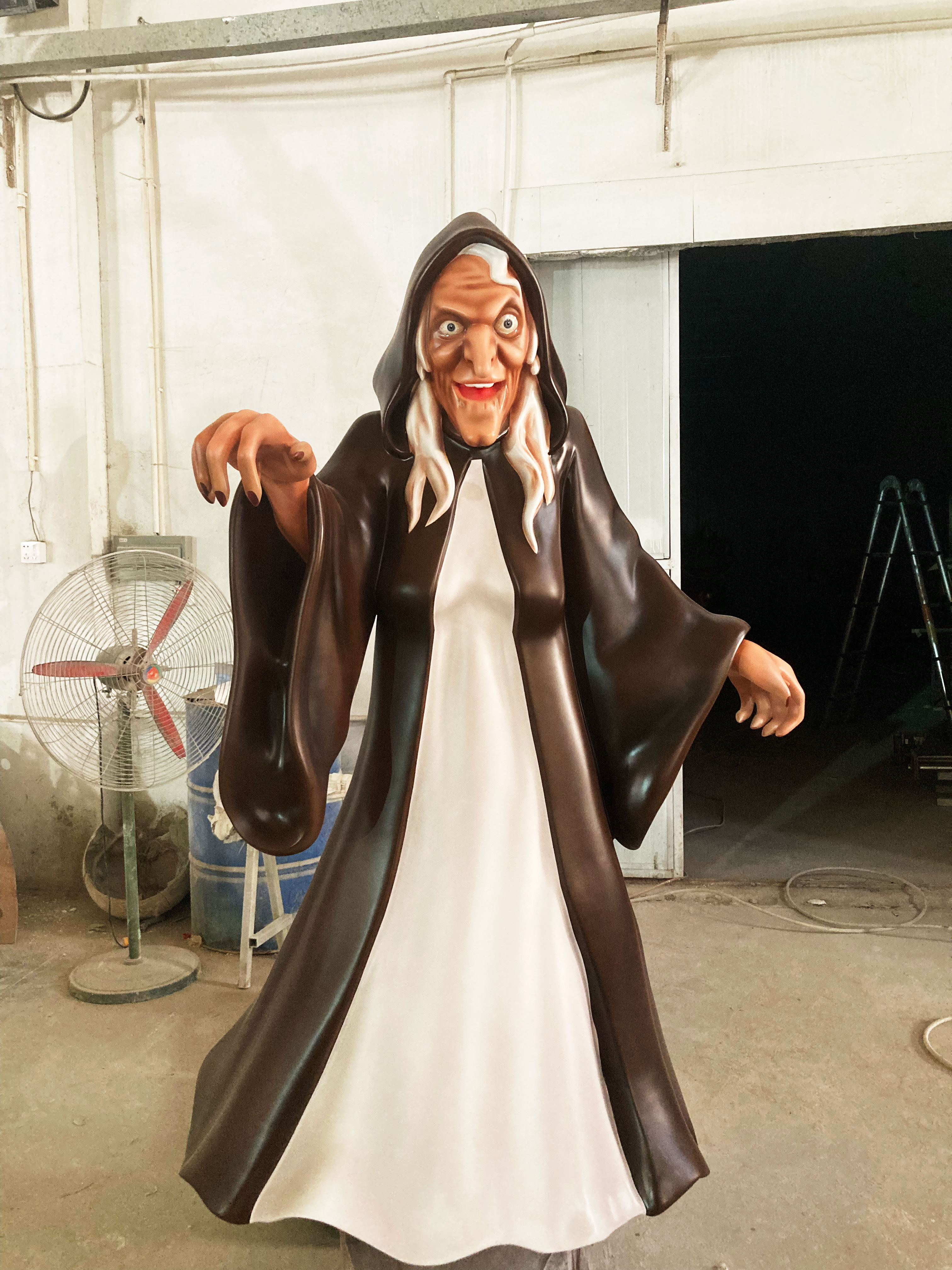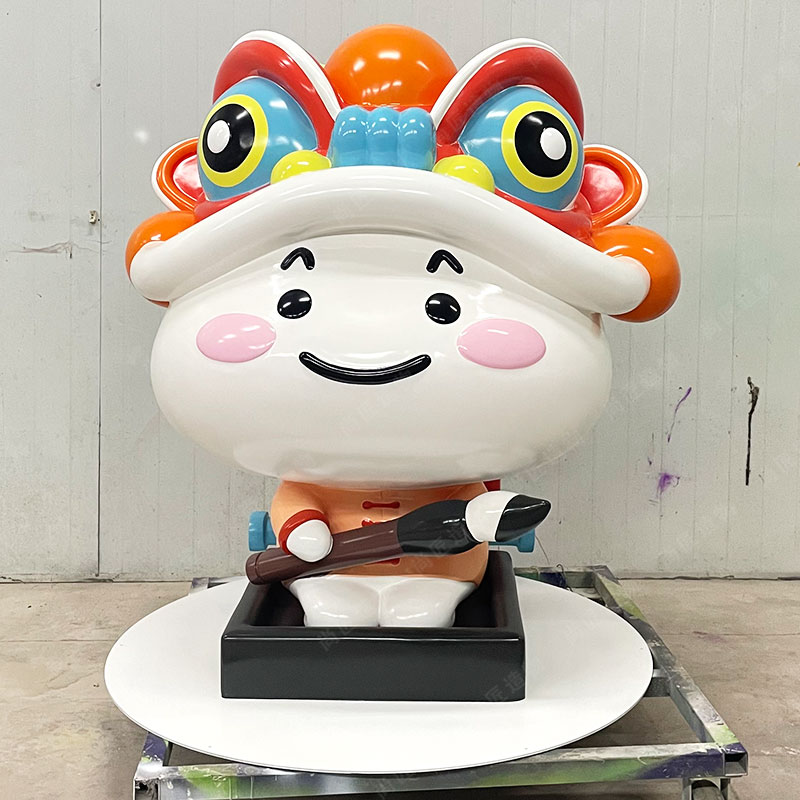Key Takeaways
Understanding weather-resistant FRP sculpture techniques requires analyzing three core elements: material composition, environmental adaptability, and precision craftsmanship. Fiberglass-reinforced polymer (FRP) composites combine polyester resin with glass fibers, creating installations that withstand temperature fluctuations (-40°F to 180°F), moisture intrusion, and UV degradation. Recent studies show properly sealed FRP artworks maintain structural integrity for 25+ years in coastal environments with 95% humidity.
| Factor | Traditional Materials | FRP Composites |
|---|---|---|
| UV Resistance | 5-7 years | 20+ years |
| Thermal Expansion | High | 0.5% max |
| Maintenance Cycles | Biannual | Quadrennial |
For museum applications, artisans employ vacuum infusion molding to eliminate air pockets—a critical step when creating intricate pieces like Cartoon sculpture requiring sharp detail retention. Public space installations benefit from gelcoat additives containing hindered amine light stabilizers (HALS), which reduce color fading by 78% compared to untreated surfaces.
Precision methods like CNC-milled molds ensure dimensional accuracy below 0.5mm tolerance, particularly vital for large-scale installations requiring seamless segment joining. These techniques enable artists to balance aesthetic complexity with the practical demands of permanent outdoor display.

Weatherproof Fiberglass Sculpting Techniques
Fiberglass-reinforced polymer (FRP) offers unmatched durability for outdoor sculptures, combining lightweight flexibility with resistance to temperature shifts, moisture, and UV degradation. To ensure longevity, artists begin by selecting marine-grade resins and UV-stabilized gel coats, which form a protective barrier against environmental stressors.
"Layering fiberglass matting in alternating orientations minimizes weak points, creating a unified structure that withstands wind and impact," notes sculptor Dr. Elena Marquez, who specializes in IP character sculpture for public spaces.
Key steps include:
- Surface preparation: Molds must be flawlessly smooth to prevent air bubbles.
- Resin saturation: Use a 2:1 resin-to-hardener ratio for optimal curing.
- Post-cure sealing: Apply acrylic polyurethane coatings annually to maintain UV resistance.
For intricate designs, consider embedding stainless steel armatures within the FRP layers. This hybrid approach balances structural integrity with artistic detail. Tip: Test small resin batches in varying humidity levels to adjust curing times before scaling production.
FRP Outdoor Art Durability Methods
Achieving long-term resilience in fiberglass-reinforced polymer (FRP) outdoor installations requires systematic material selection and fabrication protocols. Engineers prioritize isophthalic or orthophthalic polyester resins blended with UV inhibitors to mitigate solar degradation, while gel coats fortified with acrylic additives form a protective barrier against moisture infiltration. Structural integrity is enhanced through layered lamination techniques, where alternating fiberglass mat orientations (0°/90° cross-ply) counteract thermal expansion stresses. For high-traffic public spaces, integrating secondary reinforcement materials—such as carbon fiber rods or stainless steel mesh—prevents microcrack propagation under cyclic loading.
Surface treatments further extend durability: hybrid coatings combining polyurethane topcoats with nano-ceramic sealants reduce particulate adhesion and minimize color fading. Field studies of kinetic sculptures in coastal environments demonstrate that quarterly inspections of resin-to-substrate bonding points, paired with pH-neutral cleaning agents, maintain aesthetic and functional performance over 15+ years. These methods align with ASTM C582 standards for outdoor polymer composites, ensuring installations withstand temperature fluctuations (-30°C to 60°C) without delamination. By optimizing resin viscosity during molding, artisans reduce air pockets that compromise weather resistance, a critical step for museum-grade exterior exhibits.
UV-Resistant Composite Installation Guide
When installing UV-resistant fiberglass-reinforced polymer (FRP) sculptures, material preparation and environmental adaptation are critical. Start by selecting resins pre-blended with UV inhibitors, which minimize molecular breakdown from prolonged sun exposure. Gel coats with acrylic or polyurethane additives further shield surfaces, preventing fading or yellowing. For outdoor installations, anchor systems must account for thermal expansion—stainless steel brackets with adjustable fasteners allow movement without compromising structural integrity.
In public spaces, prioritize seamless joint alignment to reduce moisture infiltration, a common cause of subsurface degradation. Pair this with anti-graffiti coatings, which often include UV-stable polymers, to simplify maintenance. For museum-grade pieces, opt for low-VOC adhesives during assembly to ensure indoor air quality compliance. Field testing prototypes under simulated UV conditions helps identify weak points before final installation.
Integrating these methods ensures longevity, whether displaying realistic sculpture in arid climates or humid coastal areas. Always cross-reference local weather patterns during the planning phase, as regional UV intensity varies significantly—this informs resin formulation adjustments and protective layer thickness.
Museum FRP Sculpture Best Practices
Creating fiberglass-reinforced polymer (FRP) sculptures for museum environments requires specialized approaches to balance durability with aesthetic integrity. Unlike outdoor installations, indoor museum pieces face unique challenges, including controlled humidity, temperature fluctuations, and prolonged exposure to artificial lighting. To address these factors, artisans prioritize low-VOC resin formulations that minimize chemical off-gassing, a critical consideration for preserving delicate artifacts in shared spaces.
Structural engineering plays a pivotal role, with internal aluminum or stainless steel frameworks often integrated to support intricate designs without compromising weight limits. For example, stainless steel sculpture armatures provide stability for large-scale FRP works while resisting corrosion in climate-controlled galleries. Surface finishing techniques, such as nano-coating applications, enhance scratch resistance and simplify dust removal during routine maintenance.
Collaboration between sculptors and conservation experts ensures compatibility with museum lighting systems, particularly for pieces displayed under UV-emitting LEDs. Accelerated aging tests on resin samples help predict long-term colorfastness, allowing adjustments to pigment concentrations before final production. This interdisciplinary approach guarantees that FRP sculptures meet both curatorial standards and visitor engagement goals while maintaining structural reliability across decades.

Fiberglass Weathering Solutions Explained
Fiberglass-reinforced polymer (FRP) sculptures require specialized strategies to withstand environmental stressors such as UV radiation, temperature fluctuations, and moisture. A critical first step involves selecting resin matrices with inherent UV stability, such as isophthalic or vinyl ester resins, which resist yellowing and structural degradation. For added protection, gel coats infused with light-stable pigments and ultraviolet inhibitors form a barrier against solar exposure, maintaining color integrity over decades.
Structural design also plays a role: seamless laminates minimize micro-cracks where water could penetrate, while strategic drainage channels prevent moisture accumulation in hollow sections. Hybrid composites, blending fiberglass with additives like acrylic-modified cement or silica nanoparticles, further enhance thermal stability in extreme climates. Regular maintenance, including inspections for surface abrasions and recoating with epoxy-based primers, extends lifespan without compromising aesthetics.
For installations in coastal or high-humidity zones, anti-corrosive fiberglass sculpture techniques often incorporate sacrificial topcoats that weather predictably, allowing controlled erosion of outer layers while preserving core integrity. These solutions balance durability with artistic intent, ensuring that public and museum artworks remain visually striking despite decades of exposure. Transitioning to precision crafting methods further refines these protections, aligning material science with creative execution.

Public Art Precision Crafting Processes
Creating weather-resistant fiberglass art installations demands meticulous attention to detail at every stage. The process begins with digital modeling, where artists use 3D software to refine designs, ensuring structural integrity and aesthetic alignment with outdoor or museum environments. For complex geometries, CNC milling or laser-cutting tools translate digital files into precise physical molds. These molds, often made from high-density foam or silicone, serve as the foundation for layering fiberglass-reinforced polymer (FRP) composites.
Artisans apply resin-coated fiberglass mats in alternating directions, eliminating air pockets through vacuum bagging or hand-rolling techniques. This step ensures uniform thickness—critical for preventing stress fractures in fluctuating temperatures. Once cured, surfaces undergo precision sanding to achieve millimeter-level smoothness before UV-resistant gel coats or ceramic-based sealants are applied. Quality checks involve laser scanners to verify dimensional accuracy against original specifications.
Collaboration between sculptors, material scientists, and engineers remains central to balancing artistic vision with weatherproof functionality. For example, hidden drainage channels might be integrated into towering sculptures to prevent water accumulation, while internal steel frameworks are calibrated to accommodate thermal expansion. Such synergies enable installations to maintain their structural and visual integrity across decades of exposure.

Durable FRP Exhibits Creation Strategies
Developing long-lasting fiberglass-reinforced polymer (FRP) exhibits requires systematic planning to balance structural integrity with aesthetic longevity. Initial material selection plays a critical role—opt for high-grade resins blended with UV inhibitors and corrosion-resistant fiberglass mats to minimize degradation from moisture or sunlight. For outdoor installations, engineers often layer composite materials to create a protective barrier, integrating gel coats with anti-oxidant additives. Precision in mold design ensures uniform thickness, reducing stress points that could lead to cracks during thermal expansion.
Collaboration between artists and fabricators is essential to address environmental factors. For example, sculptures in coastal regions may require additional epoxy sealants to combat saltwater exposure, while desert displays benefit from embedded reflective pigments to deflect intense UV radiation. Structural supports, such as stainless-steel armatures, should be pre-treated to prevent galvanic corrosion where metal meets composite surfaces. Regular maintenance protocols, including annual inspections for micro-fractures or surface erosion, further extend the lifespan of exhibits. By aligning material science with site-specific challenges, creators ensure FRP installations withstand decades of environmental stressors while retaining visual impact.

Advanced UV Protection for Sculptures
Protecting outdoor fiberglass art installations from ultraviolet radiation requires a combination of material science and strategic design. While FRP composites inherently resist environmental stressors, prolonged sun exposure can degrade resin binders and cause color fading. To address this, manufacturers integrate UV-inhibiting additives directly into the resin matrix during production. These specialized compounds absorb or scatter sunlight at the molecular level, slowing photochemical breakdown without altering the material’s structural integrity.
Gel coatings with embedded titanium dioxide or hindered amine light stabilizers (HALS) create an additional defensive layer, reflecting up to 98% of UV rays before they penetrate the substrate. For installations in high-sun regions, applying acrylic urethane topcoats every 5-7 years refreshes this protective barrier. Recent advancements include nano-ceramic clear coats that block infrared heat transmission, reducing surface temperatures by 15-20°C—a critical factor in preventing thermal expansion cracks.
Museum conservators recommend pairing these technical solutions with strategic placement, using architectural shading or orientation adjustments to minimize direct sunlight exposure. For coastal installations, combining UV-resistant finishes with salt-spray protection coatings ensures dual defense against common weathering agents. Regular inspections using UV light meters help quantify degradation rates, enabling proactive maintenance before visible damage occurs.
Conclusion
The development of weather-resistant fiberglass art installations represents a critical intersection of material science and artistic craftsmanship. By leveraging advanced FRP techniques, artists and engineers can create sculptures that withstand environmental challenges while maintaining aesthetic integrity. These methods not only address UV degradation and moisture exposure but also ensure structural stability in diverse climates, from coastal areas to urban centers.
As institutions and public spaces increasingly prioritize longevity in art investments, mastering these processes becomes essential. The integration of specialized resins, layered composite strategies, and precision molding allows for tailored solutions across museum exhibits and outdoor installations alike. Looking ahead, continued innovation in fiberglass formulations promises to expand creative possibilities while reducing maintenance requirements.
Ultimately, the success of such projects relies on balancing technical expertise with artistic vision. By adopting proven weather-resistant practices, creators can deliver works that endure as both cultural landmarks and testaments to material durability. This approach not only preserves artistic intent over time but also aligns with sustainable practices by minimizing resource-intensive repairs or replacements.

FAQs
What makes fiberglass-reinforced polymer (FRP) suitable for outdoor art installations?
FRP composites combine fiberglass strands with resin matrices, creating a material resistant to moisture, temperature fluctuations, and UV degradation. This structural stability ensures longevity in harsh weather conditions.
How do UV inhibitors protect FRP sculptures from sun damage?
Specialized UV-resistant coatings and gel coats are applied during fabrication. These layers block harmful rays while maintaining color vibrancy, preventing fading or surface cracking over decades of exposure.
Can FRP sculptures withstand extreme temperature changes in public spaces?
Yes. The thermal expansion coefficient of FRP closely matches concrete and steel, minimizing stress fractures. Engineers incorporate flexible joints and layered laminates to accommodate seasonal expansion/contraction.
What maintenance do weather-resistant FRP installations require?
Annual inspections with gentle pressure washing suffice for most pieces. Abrasive cleaners should be avoided to preserve protective coatings. Damaged areas can be patched using matching resin compounds.
How do museum-grade FRP exhibits differ from outdoor versions?
Indoor sculptures prioritize surface detailing over weatherproofing. While still UV-stable, they use lighter resin formulations and thinner laminates for precise replication of artistic textures.
Are fiberglass art installations environmentally safe for public areas?
Modern FRP composites use low-VOC resins and recyclable materials. Neutral pH formulations prevent soil contamination, meeting international standards for civic infrastructure projects.
What design limitations exist for large-scale FRP artworks?
While FRP allows complex geometries, spans exceeding 10 meters require steel armatures. Computational modeling ensures load distribution aligns with material tensile strength thresholds.
How long do professionally crafted FRP sculptures typically last outdoors?
Properly maintained installations retain structural integrity for 50+ years. Accelerated aging tests show less than 2% material degradation per decade in temperate climates.
 ch
ch English
English






